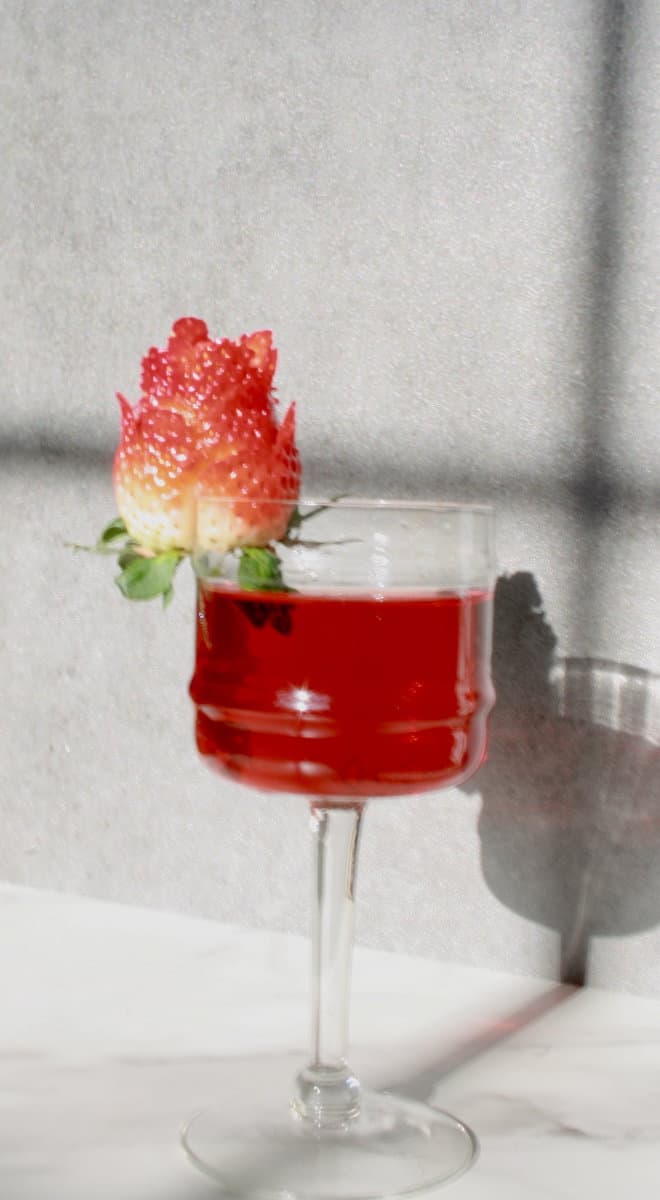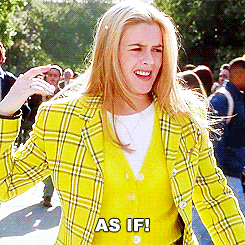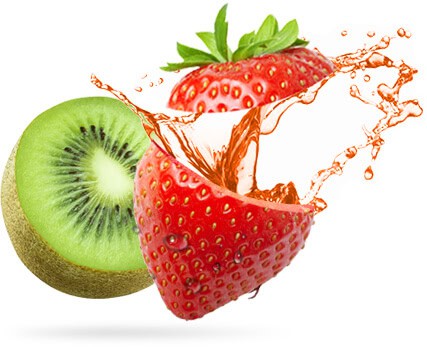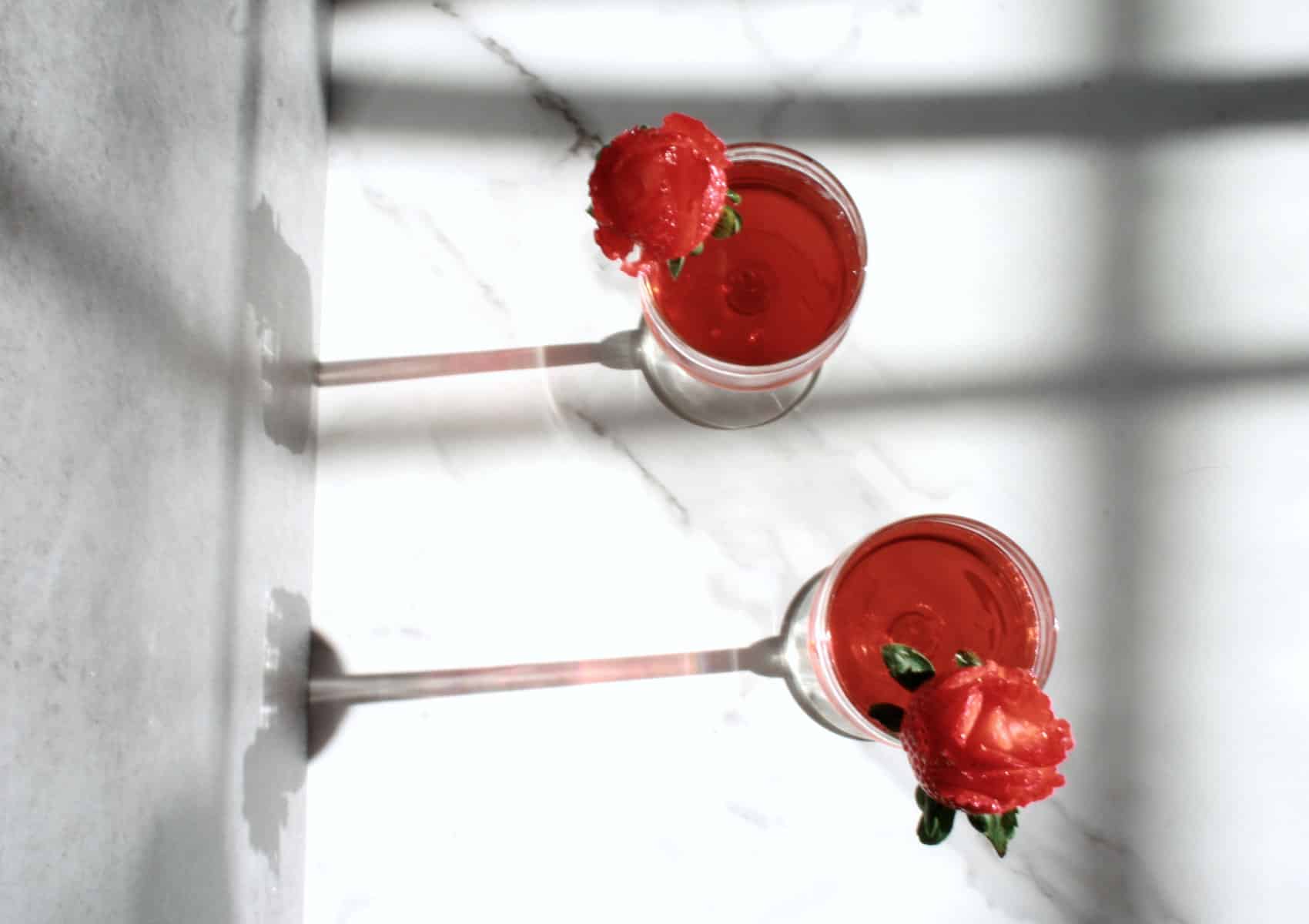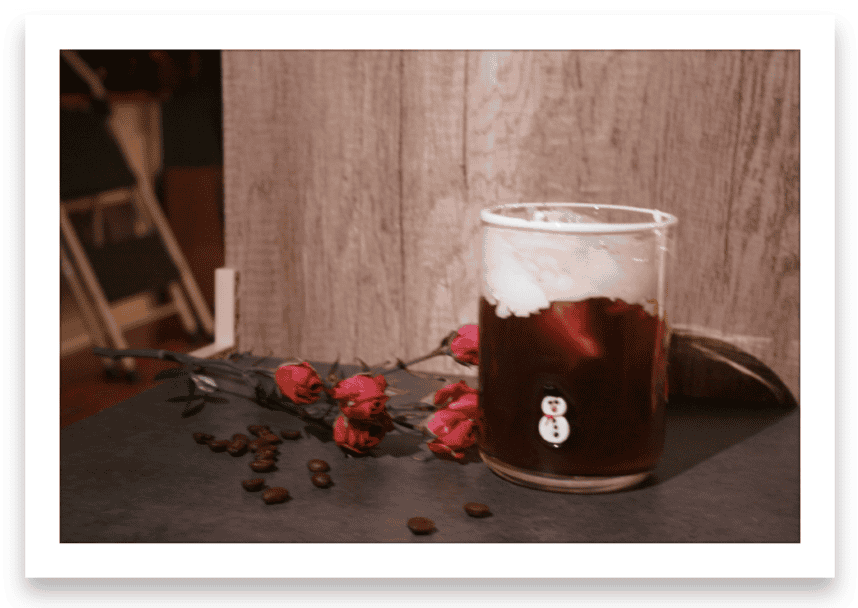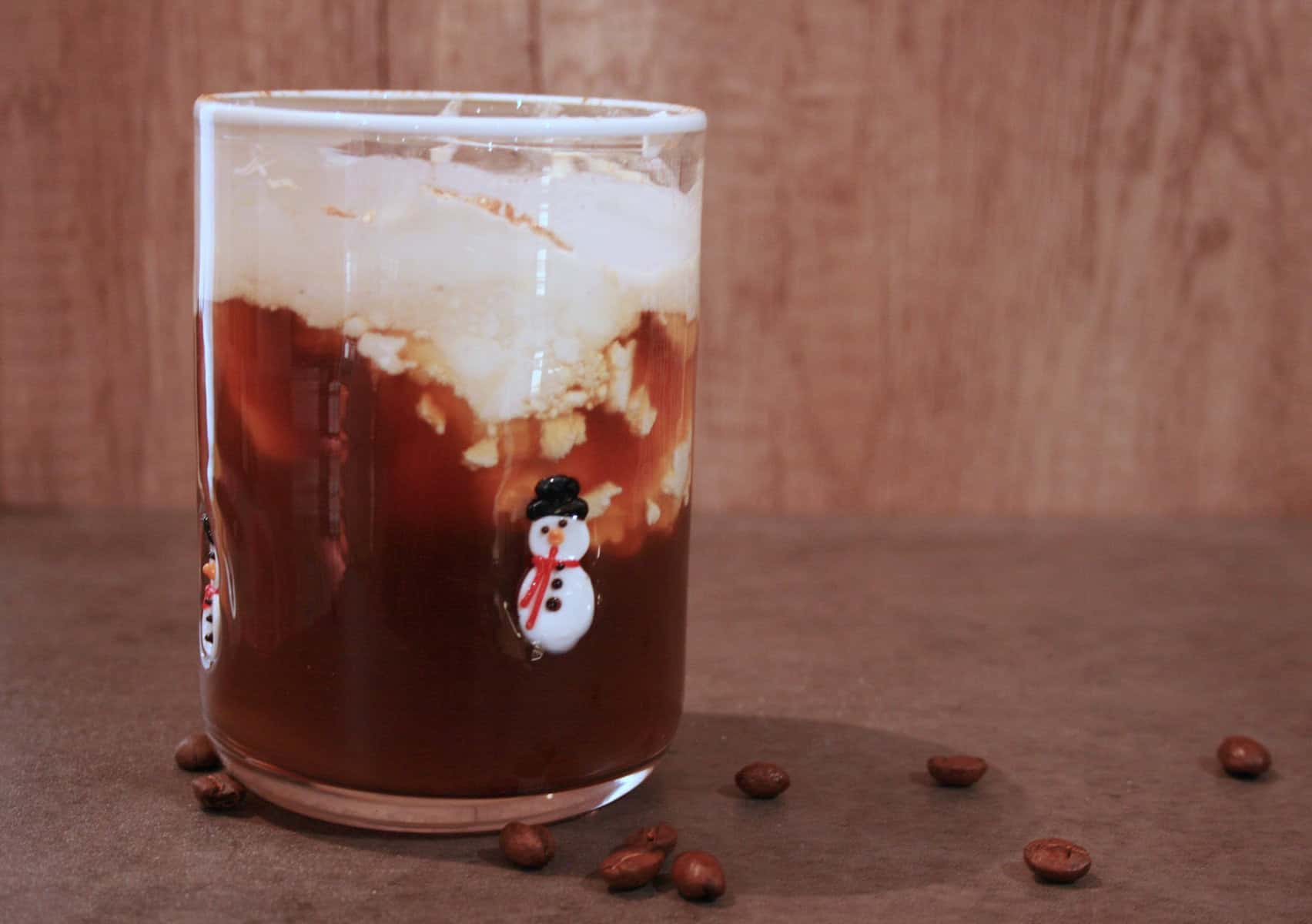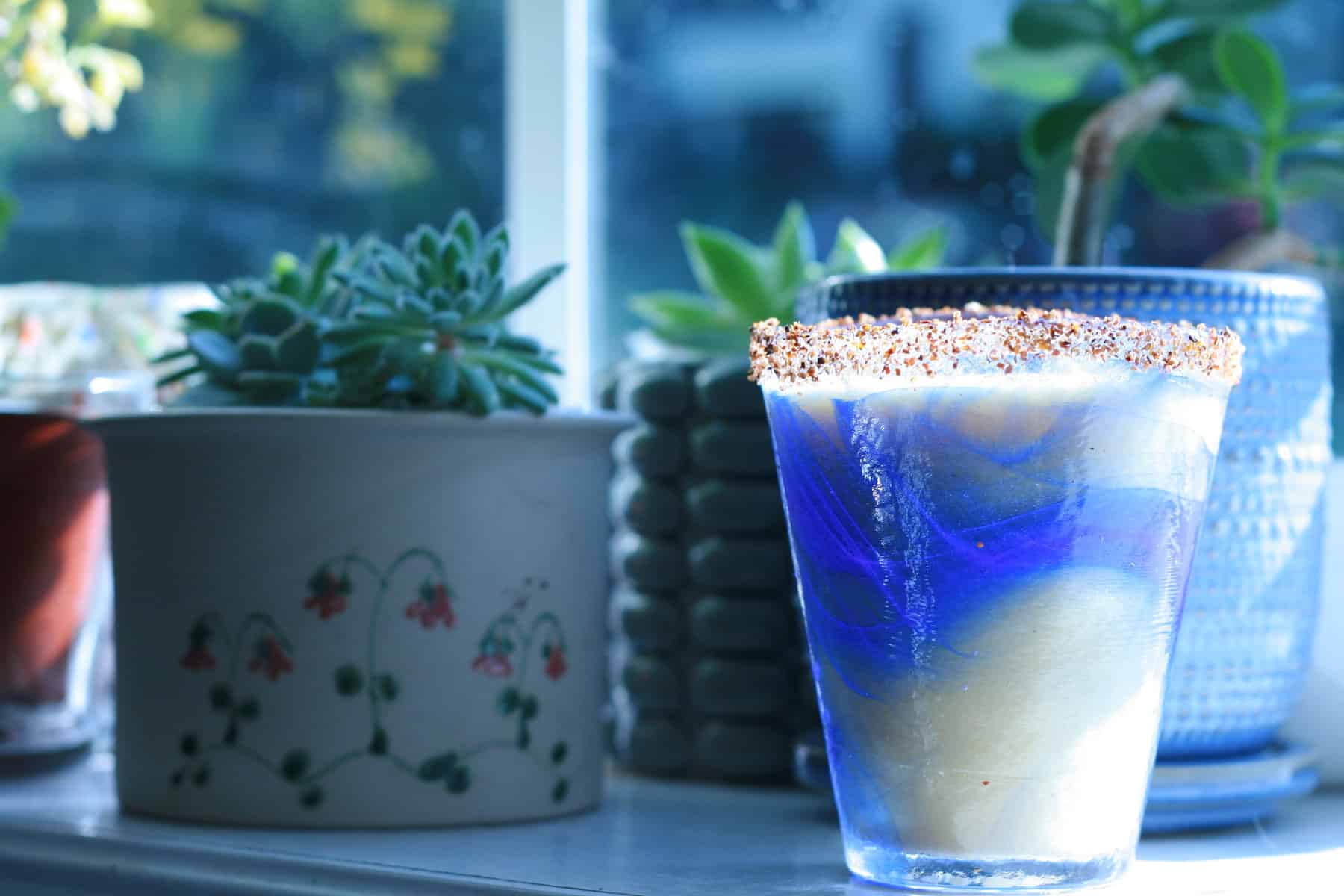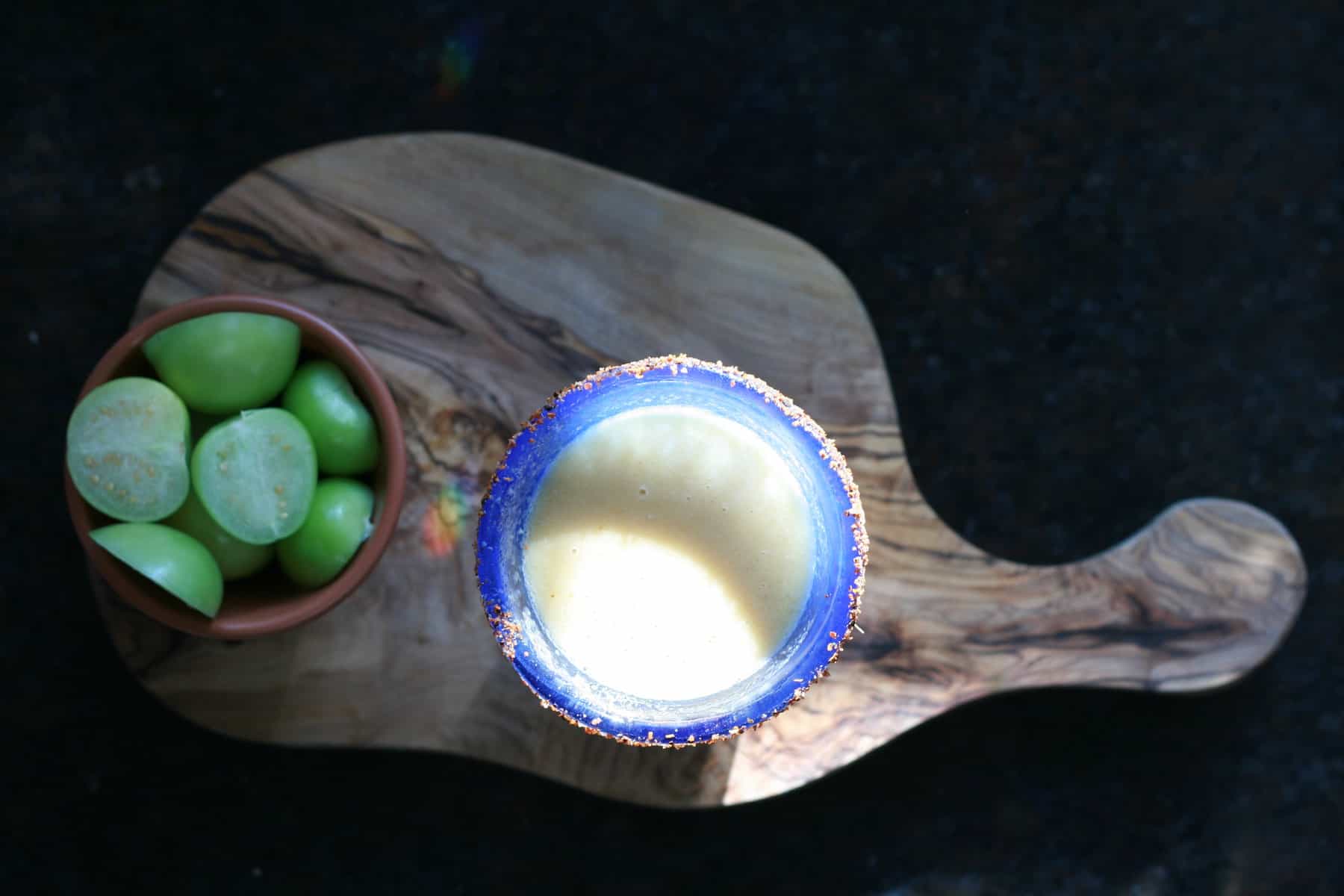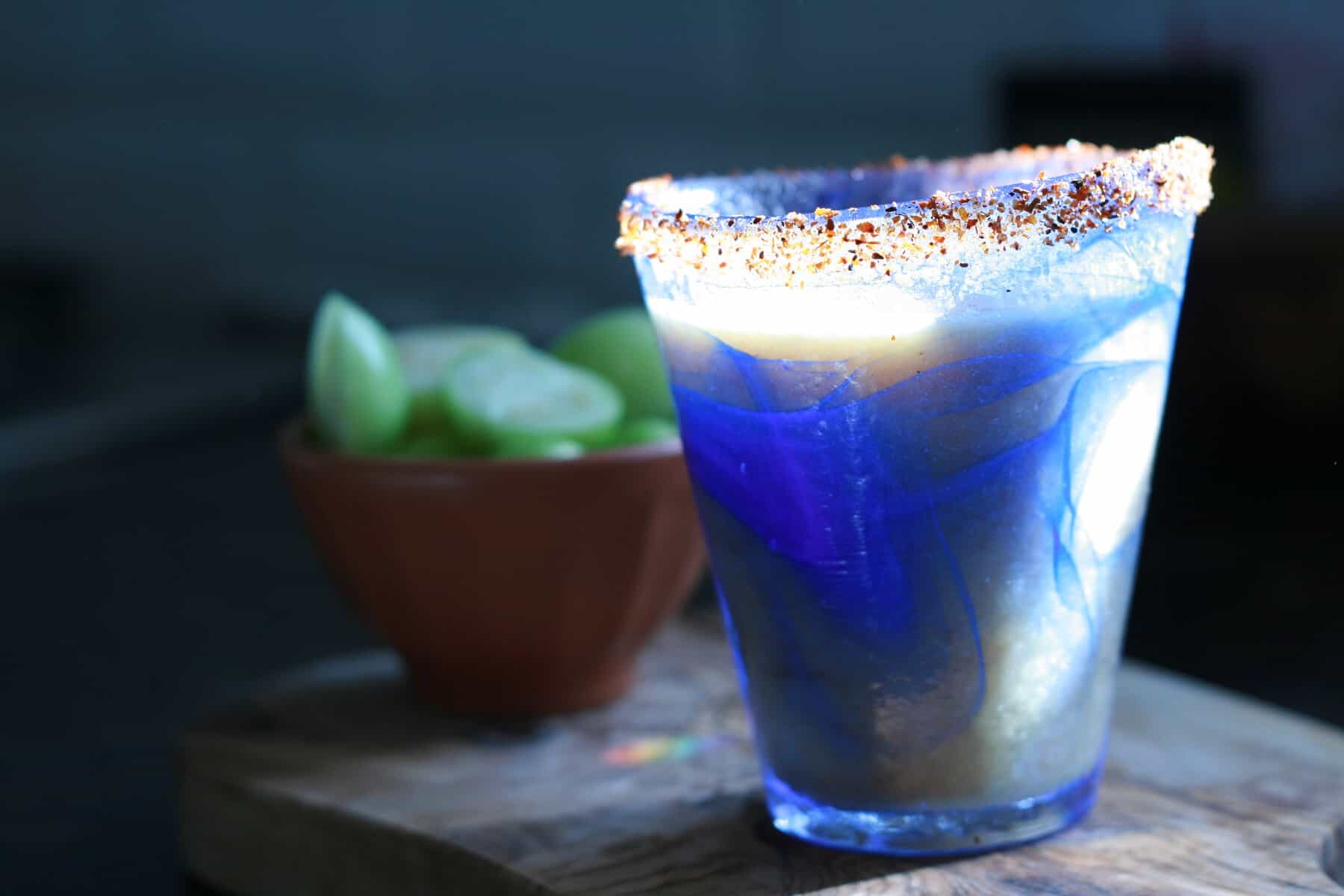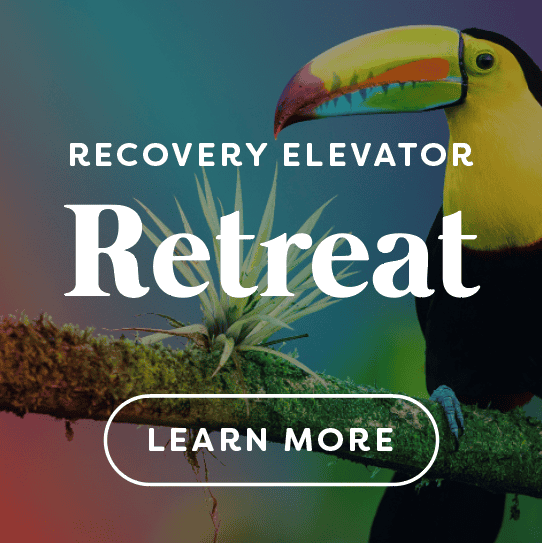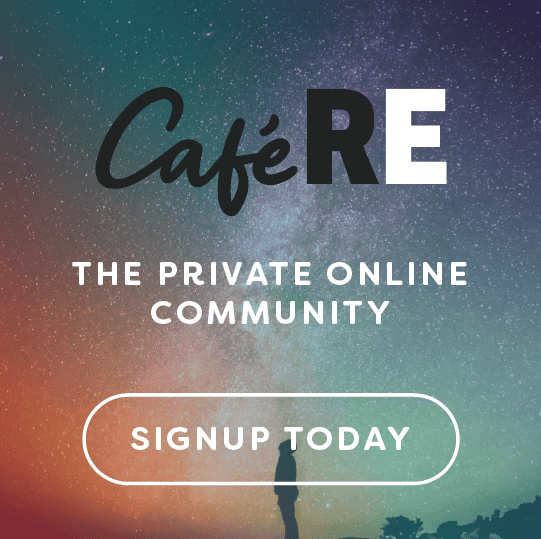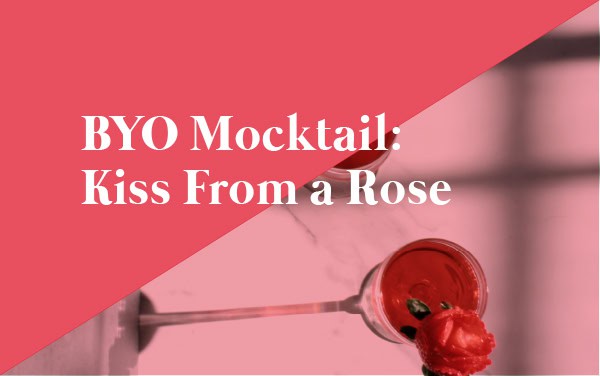
by RE Helper | Feb 15, 2023 | Alcohol Free, Blog, Mocktail, Recipe, Resources
This past year I have been working for a large international women’s retail clothing store. I have the first hand knowledge of how fashion is coming back around… the good and the bad. The return lately has been to the fashion of the early 90s, grunge but with a little more sophistication and polish.
While I am not loving the low rise jeans that are back (can we please just not) and overalls, I am loving the return of Clueless and Cher’s plaid suit, slip dresses, a cropped sweatshirt and a good bias cut.
Having my head so firmly in the 90’s and a lot of time on my hands has led me to day dreaming back to that magical time as well. In my high school, before parents worried as much about what we ate during the day, I would buy a Snapple Kiwi Strawberry drink everyday for $1.25 and drink it with my lunch. Something sweet and tart at the same time really hit the spot.
I think I just heard the 3 people who
read this blog get really excited!!
They know where this is going!
Kiss from a Rose
Serves 2
Prep time: 15 minutes + cooling time
Ingredients Simple Syrup
- Handful of strawberries, rough chopped
- 2 Kiwis peeled and rough chopped
- 1/2 c. sugar
- 1/2 c. water
Additional Ingredients
- Seltzer of your choice
- 1t of balsamic syrup
To make the syrup
Add all ingredients to a pan and bring to a boil over medium head, stirring until the sugar is dissolved. Once boiling reduce heat and let simmer for 10 minutes. Strain and allow to cool. Store in an airtight container in the refrigerator for up to 1 month
To make the cocktail
Add 1T of the simply syrup, add 1t balsamic syrup (try a berry flavored one) top with seltzer of your choice and stir.
The Recovery Elevator podcast last week was about the AF beverage (S4 / E416), go check it out and let us know where your feelings lie on this!
Love and Mocktails,
Kate
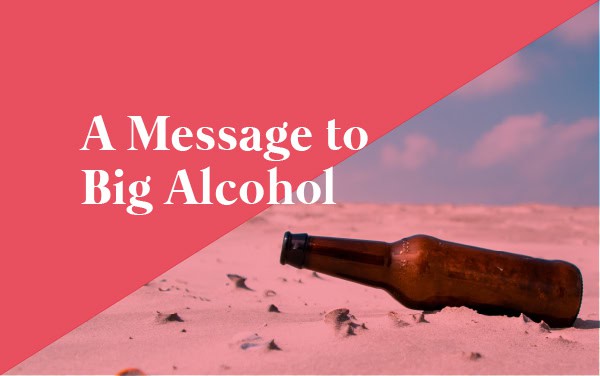
by Kerri MacFarlane | Jan 14, 2023 | Alcohol Free, Big Alcohol, Early Sobriety, Expectations, Resources
406 episodes of the Recovery Elevator Podcast were released before there was an intro with the main message being addressed to Big Alcohol. Why do you think that is? That’s a lot of Mondays to not tell Big Alcohol what we think, (or where to stick it ?). Why wasn’t this addressed before episode 407: A Message to Big Alcohol…?
Well, like Paul said…we have limited time together and it feels like a better use of our time discussing how to build a new life that no longer requires alcohol, instead of fighting Big Alcohol, or fighting the past.
In fact, although you may not feel like it right now…if you keep moving forward, if you don’t quit quitting, and you keep doing the next right thing, one day at a time…you may just find yourself thanking Big Alcohol for giving you the life you have today. Crazy to imagine, right? I know it was for me. But it absolutely is true today. I am thankful for where my struggle with Big Alcohol has led me.
So here we are…let’s call out a couple of things regarding Big Alcohol, and maybe, there is a way we can work together.
First off, let’s get real for a second Big Alcohol. We both know your business model doesn’t survive off normal drinkers. Your lights are on, your doors are open, salaries are paid because of problematic drinkers…aka: alcoholics.
This is called the 80/20 rule in business and for Big Alcohol, it’s probably a 90/10 rule. This means that 90% of revenues are coming from 10% customers.
Let’s take a normal drinker. This is someone who buys a six pack of Coors Light, drinks 2-3 beers, and the remaining 3-4 cans sit in the refrigerator in the garage for the next couple weeks or months.
That is one type of customer.
Then take the alcoholic. This is someone who buys a 12, 18, 24, or 30 pack of Coors Light… daily. Where do you think your revenue is coming from? This question is rhetorical because they already know this.
Big Alcohol, we bring this up because there needs to be accountability on your part…and here’s some reasons why:
◾️Yes, it’s the individual who is drinking excessively, but the data and science support that alcohol is the most dangerous and addictive drug on the planet.
It kills more people each year than every other drug combined. An estimated 40-75% of occupied hospital beds have underpinnings to alcohol. In 2010, a Doctor named Dr. David Nutt, hired by the British government, was tasked to put a harm score on the world’s 20 most addictive drugs. Alcohol came in at #1. In 1958 the American Medical Association classified alcoholism as a disease.
◾️No amount of alcohol consumed is beneficial to the consumer.
This a myth that you, Big Alcohol, tries to perpetuate. In the Mid 2010’s the government funded agency the NIAAA (National Institute on Alcohol Abuse and Alcoholism) performed a study to see if alcohol consumption was good for you.
The answer was…YES. Say whattttt?? ? However, it then became known the study was funded by Big Alcohol. No surprise the answer was yes! ?
In reality, no quantity of ethanol is good for you. The Huberman Lab Podcast has a fantastic episode about the effects of alcohol on your mind and body. The Stanford University Neuroscientists confirmed that no amount of alcohol is good for you.
◾️And let’s talk trash, garbage or waste.
A couple months ago Paul had new brakes installed on his vehicle and he rode his bike home from the mechanic after dropping off his truck. He took a scenic county road home for about 7 miles. While hugging the side of the road he was astonished by the amount of empty alcohol containers that littered the shoulder.
Keep in mind, this was in the part of the grass that had been maintained. Paul said he guessed there was triple or quadruple the amount of empty bottles and cans in the taller grass. (Now to be fair, he did see empty gatorade bottles, and trash that was not related to alcohol, but he said if he had to guess it was a 10/1 ratio.). Paul estimated there was an empty alcohol container every 100 feet (and that’s a safe estimate). With some easy math that put 52 bottles, or cans, every mile totaling over 350 pieces of trash on his 7 mile bike ride. That figure would be way higher if one were to walk through the taller grass.
This past October Paul did a retreat in Peru. One of their tasks was to pick up trash around a sacred temple about 20 miles outside of Cusco, which once was the capital of the Inca Empire. They filled about 4 trash bags, and again about a 10/1 ratio of alcohol containers to other trash.
Big Alcohol’s footprint is all over the globe; societal wreckage, physical disease, and in the form of excessive trash.
As human beings there is a goal that many of us share. That is to make this world a better place. ??
Big Alcohol, let me ask you this question, are you making the world a better place?
What impact are you having on society? On the fabric of family systems? Are you adding or subtracting to this world? Are you a net benefit? Or a net drain? What do you stand for Big Alcohol? Are you okay with your customers discarding your product waste into nature? Into my backyard? Into your backyard? Big Alcohol, your name, your brand, your message is on these containers that end up in our streams, rivers, and oceans. By all concerns you are still tied to the product, but you are not shouldering the burden after the monetary transaction has taken place.
This. Needs. To. Change.
As we all work on cleaning up our internal wreckage and chaos it’s time that you, Big Alcohol, start doing the same.
We here at Recovery Elevator are calling you out, Big Alcohol, to lean up your mess. A disproportionate amount of trash in nature is yours. It’s the RIGHT thing to do – to pick it up. We have a yearly service project at Recovery Elevator, and we’d love your help. Maybe take 1/2 a percentage of your marketing budget and help us out.
Big Alcohol, if you want to work with us, we’re open to it. Our email address is info@recoveryelevator.com.
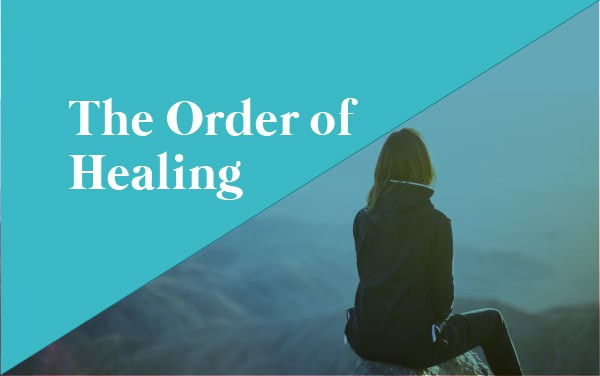
by Kerri MacFarlane | Dec 15, 2022 | Early Sobriety, Expectations, Helpful Tips, Resources
Let’s talk about the order of healing when you quit drinking. We’ll also put a time frame on it…more or less place holders for what you can expect. As with everything in recovery…your time frame may not exactly match up with what is outlined here…but should be close! ??
When we ditch the booze the healing happens in the reverse order as the destruction.
When we slide down the chasm of addiction we are afflicted spiritually first, as that is the first connection that becomes severed. Next up is our mental health, and then the physical body fails. The body can’t keep up with the amount of poison entering it and organs begin to fail, think liver and pancreas.
So the destruction happens spiritually, mentally and then physically.
The healing happens in reverse.
We heal physically, mentally and then spiritually. It’s a triage of sorts. Keep in mind there is always overlap. You won’t say, okay, I’m physically strong, now let’s work on the mind. In addition, the three will always be a work in progress.
Good news here, you don’t need to initiate the steps of this healing process. As long as you do the following, the intelligence of the body will take over.
Here is what you need to do.
1️⃣. Ditch the booze
2️⃣. Fuel the body with healthy fuel. Food that is alive..aka: greens, veggies, fruits, and try to cut down on meat. At least for a bit.
3️⃣. Cut back on sugar and caffeine intake. Here at RE we love our ice cream…so green light on the ice cream in the first 15-30 days, but try to cut back to 1-3x per week. Caffeine, 1 cup per day. This is mostly to help with relaxation and sleep.
4️⃣. Moderate movement. Walk, hike, jog, stretch, yoga, weights…for 20 min, 3x per week.
5️⃣. Here’s the fun part – Recovery! This could be AA, we have Café RE, Smart Recovery, Treatment, IOP, etc.
On day 1 we begin healing physically. The cells in the back of the mouth, the throat, the stomach, liver and pancreas are the first to say, thank you!!
Let’s talk about weight. If you lose weight, great! But there’s a good chance you’re going to gain weight. Beer, wine, spirits are basically empty calories, or the same as a moldy gummy worm. You may see your body expanding in your first 30 days, which is beautiful. There is more of you to love. A book Paul recommends to help fuel your body properly is The All Day Energy Diet by Yuri Elkaim.
The physical restoration component is anywhere from 3-12 months depending on how far you rode the shit storm of addiction.
Then begins the real fun stuff…the mental work, which is anywhere from 6 mo -1.5 years. In active addiction there is chaos internally. There is no coherence with the body and the mind. After we find our footing physically, the brain seemingly is going to go haywire. You won’t naturally find yourself in the present moment, but this is the time to really focus on every task at hand. Washing the dishes is our recovery work.
A big part of the mental healing is letting the hypothalamus, pituitary and adrenal axis settle down. These three organs control the stress response. Cravings and moments where you’re triggered begin to smooth out once this stress mechanism comes back down to earth.
The mind and body will thank you for getting off the rollercoaster of emotions and rock bottoms. Those are stressful and wreak havoc on our inner peace. At the tail end of the mental healing is when something neat happens.
In fact, it’s extraordinary.
This is when we have the capacity to recognize we are not the thoughts, but the one who experiences them. Or as Eckhart Tolle says, life is the dancer, and we are the dance. This is the bridge to the spirituality component of our healing.
As the Swiss, 20th century analytical psychologist Carl Jung says – we enter a spiritual dimension when we begin experiencing synchronicities in life. Or we almost see the bread crumbs confirming we are on the right path. Jung was a firm believer that there are no such things as coincidences and everything is connected. Or interdependent. Both in the physical and the dream world. According to Jung, this metaphysical state of living occurs when we are in balance.
When we are in a healthy dance with time and congruent with the natural flow of life, this is when those seemingly synchronistic events take place. They are quite powerful to be honest. They make you feel connected to something for sure. Paul says, to be fair, he did experience these synchronistic events before quitting drinking, but it was like once every couple of years and nowadays, it’s weekly and sometimes daily.
One reason why healing spiritually comes last is because it helps to make this connection in times of repose, sitting, meditating or focusing on the breath.
Paul says, “I don’t know about you, but there was 0% chance I was sitting in lotus position to connect with a higher power in my first 2-6 months. Probably not even the first two years. Meditating for me at first, was absolutely brutal. But as I progressed, I began to enjoy it, and with some meditations, I would feel euphoria in parts of my body and once I think the best word to describe what happened was astral travel.” – (He knows it sounds strange. ?)
So…that’s the most common pathway when it comes to healing from a drinking problem.
There is a concept to describe the initial phases of this which is PAWS. Short for Post Acute Withdrawal Syndrome. This is your body, mind, heart, organs, and soul, recalibrating – finding a new homeostasis. Please don’t hit the eject button if you have a rough day or 20. After chaos, calm is always on the horizon. This is a universal law. PAWS lasts anywhere from 3 months to a year or two…. Yea it can be uncomfortable, but it’s preferable to the perilous road of addiction.
***Taken from Recovery Elevator Podcast, episode 404, host Paul Churchill***

by RE Helper | Nov 14, 2022 | Alcohol Free, Blog, Holidays, Mocktail, Recipe, Resources
Who else feels the last three months of each each really blend together…starting with Costume-palooza all the way through “New-Year-New-Me!”?
I love a good party just as much as the next person, but I also need to focus on the traditions that unique to my family. The holiday decorating has been happening earlier and earlier every year, and this year is no exception.
It becomes important to keep traditions.
I like to do most of our end of year things with a warm drink in my hand. Recovery Elevator was lucky enough to have Rise Up Coffee roast us a special Bozeman Blend this year and I used that in my recipe today.
This drink can be enjoyed hot or cold, but I almost always drink it hot. The dichotomy of cold whipped cream and hot coffee with a touch of malted flavor is something that reminds me of holidays at home.
All Snowed In (AF)
Serves 1
Prep time: 5 minutes
Ingredients
To make the drink
Combine all ingredients, stir, top with whipped cream, sprinkle with cinnamon. Enjoy by the fire.
What are some traditions you keep and still love?
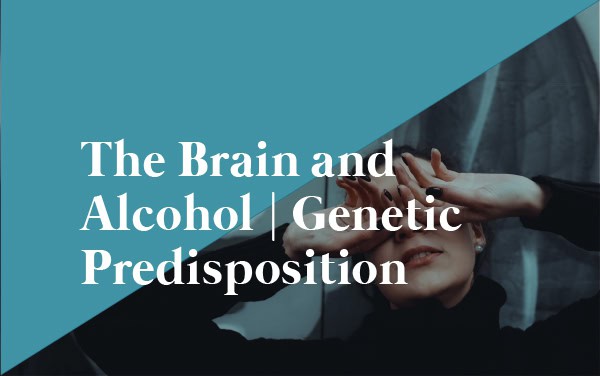
by Kerri MacFarlane | Oct 15, 2022 | Alcohol Free, Blog, Helpful Tips, Resources, Science and alcohol
Let’s talk about science and alcohol. It’s a pretty interesting and popular subject when the topic of recovery and sobriety gets brought up.
But let’s keep in mind that it’s not enough to rely on science and information to ditch the booze. Yes, it’s interesting and knowledge is power, but please don’t solely rely on knowledge, science and information alone to quit drinking. If we could read or listen ourselves out of a drinking problem, well, the problem would be solved. ??
Paul loves the science part of addiction and recently did a podcast intro on just that. (RE Episode 396)
Paul got most of his info from a fantastic podcast episode from the Huberman Lab Podcast, What Alcohol Does to Your Brain, Body & Health| Episode 86. I highly recommend you check it out and listen when you get a chance…Dr. Huberman goes into great detail in this 2 hour episode and even those without a drinking problem will find it interesting and beneficial.
Andrew Huberman, Ph.D., is a neuroscientist and tenured Professor in the Department of Neurobiology at the Stanford University School of Medicine.
Alcohol and the brain. ??
Alcohol has many biochemical and neurochemical effects on the brain. There are dramatic changes in the neurons that control the release of serotonin when we consume alcohol. Serotonin is the feel good chemical and 80% of it is created in the gut. When we mix alcohol and serotonin it gets converted into acetaldehyde. Acetaldehyde damages your DNA and prevents your body from repairing the damage. A toxic buildup of acetaldehyde can increase your cancer risk.
This acetaldehyde acts as a toxin at the very synapses and the connections between the serotonergic neurons and lots of other neurons. In other words, when we ingest alcohol, the toxic effects of alcohol disrupt those mood circuitries.
It does this first ☝?by making them hyper active.
This is why people become happy or more talkative after a couple of sips of alcohol. But when the alcohol wears off the serotonin levels and the activity of brain circuits really start to drop and this is why most people head to the bar for a second round. Now typically what happens when people ingest their 3rd, 4th or 5th drink, there is an absolute zero chance of them recovering that energized mood they experienced on the first drink. Most people, when they drink more and more, begin to feel suppressed ?. The front part of the brain, the frontal cortex, is starting to shut down. The motor areas of the brain that control motion and basic functions begin to slow.
This is the slurred speech, the swaying back and forth, the classic drunk shuffle. People begin to lean on things, uncomfortable benches seem like a good place to spend the night. There is a great depression, not of the psychiatry sort, but a depression of alertness and arousal, and eventually people begin to pass out. ?
Here’s one big way that alcohol changes your brain chemistry.
Alcohol changes the relationship between the hypothalamus, the pituitary gland and the adrenals. The hypothalamus, which is about the size of a gumball and sits above the roof of the mouth, provides a specific set of signals for the pituitary gland…which then releases hormones into the bloodstream that go and talk to you adrenals which sit right above your kidneys in your lower back. The adrenals release a chemical called epinephrine and cortisol which is involved in the longer term stress response.
The hypothalamus, the pituitary gland and the adrenals maintain the physiological balance of what you perceive as stressful. People who consistently drink are more stressed out at baseline then sober peeps. They have more cortisol released from their adrenal glands even when they are not drinking. And a consequence of this is they feel more stressed and feel more anxiety when they are not drinking. Most medical professionals will agree that stress is the number one contributor to disease.
Let’s talk about blackouts for a second. Blacking out is not passing out. When we overload the brain with alcohol, it’s almost too much to process and the activity of neurons in the hippocampus, which is involved with memory formation, are strained and then they completely shut off. As in you no longer form memories. You are still awake and can still be functioning, some high functioning, but the memory forming part of your brain, the hippocampus, clocks out.
Now…to genetic predisposition…
Side note, Paul doesn’t believe in genetic predisposition to alcoholism. He used to, but now he doesn’t.
Addiction guru Dr. Gabor Mate’s teaching rebukes the genetic myth. Dr. Mate feels all addictions are trauma responses. What helped Dr. Mate reach this conclusion was his studying of twins who have the same genetic makeup. He also studies twins with the same genetic makeup who are separated at birth. His conclusion is that all addictions are environmental responses, or coping behaviors that allow people to survive in unhealthy environments.
Dr. Bruce Lipton, who is coined the father of Epigenetics in the 90’s, would also agree with this. Epigenetics says it’s the environment that controls the expression of genes and gene mutations. In addition, it’s the environment that cues anxiety, depression, addiction, auto immune responses, cancers, inflammations, and not genetics. The classic Rat Park experiment by Bruce Alexander in the 70’s also shows addictions are environmental.
Paul says, “I am on board with this approach and even in the past 8 years doing Recovery Elevator, I’ve seen the pendulum slightly shift in this direction.” What we’re seeing now, is our biological makeup is much more adaptive and reflexive to environments than previously thought. Again, Paul feels, most addictions are trauma based. They are adaptive behaviors. Another reason he doesn’t think alcoholism is genetic is because alcoholism is rapidly on the rise. Gene’s take thousands, millions of years to evolve. Gene’s can’t explain the ten fold increase in alcoholism we’ve seen in the last couple centuries.
That being said, we do want to share different perspectives on alcoholism.
Dr. Huberman feels alcoholism is genetic. He does mention that there is no blood test, fingerprint test, or bio marker to indicate this addiction gene. Dr. Huberman says the best way to “identify” alcoholics and non alcoholics is by putting drinkers in two bins. One bin is the group of people who have a couple of drinks and then get tired with a nodding head, or they feel sedated. The other bin of people is the group that has a couple of drinks and gets energized and are not sedated. The drowsy group after a couple drinks are your normal drinkers. The let’s go streaking in the quad and bring your green hat group are the future alcoholics.
Is it genetic based, or trauma based. Most likely it isn’t 100% one or the other. It’s most likely a combination of 57,680 different things.
Again, we don’t recommend getting too caught up in all this. At the end of the day, you’ve got a drinking problem. Knowing what alcohol does to your prefrontal cortex isn’t going to keep you sober in the long run.
Find what works for you…and go with that!
***Taken from Recovery Elevator Podcast, episode 396, host Paul Churchill***
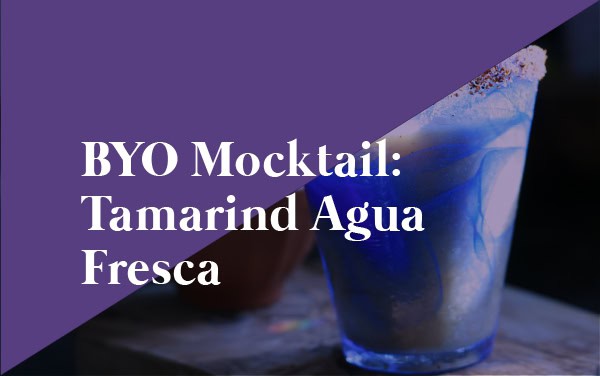
by RE Helper | Sep 18, 2022 | Alcohol Free, Blog, Helpful Tips, Mocktail, Recipe, Resources
At this point it sounds cliche, 2022 has been an a$$ kicker of a year. I’m very tired, but I’m also very sober, still. Sober because I was lucky enough to have built a large toolbox which I relied on a lot this year. When I tell you that I used ever single tool in there… I am not lying.
2022 has been the year I almost drank.
Fangwell judging me and also probably you.
For the most part I hang out with my pets and my husband. But among the highlights was a cruise to Alaska and I went to Bozeman to hang out with my sober friends, who are now like family.
Returning home, all I want to do is spend the long days of the end of summer on my back porch drinking something fancy and refreshing.
Therefore, I keep my mixing simple and to the point. I used fruit to keep it sweet and a topper of your choice of seltzer makes it unique!
Tamarind Mango Agua Fresca (AF)
Serves 2
Prep time: 5 minutes
Ingredients
- 1⁄2 cup Tamarind Nectar
- 1 t Tamarind puree
- 1⁄2 cup frozen mango
- 1 t honey
- 2T Tajin
- Fizzy water (your choice of flavor)
To make the drink
1- In a blender place the nectar, puree and frozen mango. Blend until smooth.
2- Rub the honey along the rim of the glasses and then dip the edges into Tajin.
3- Divide the mixture evenly and top with the fizzy water.

